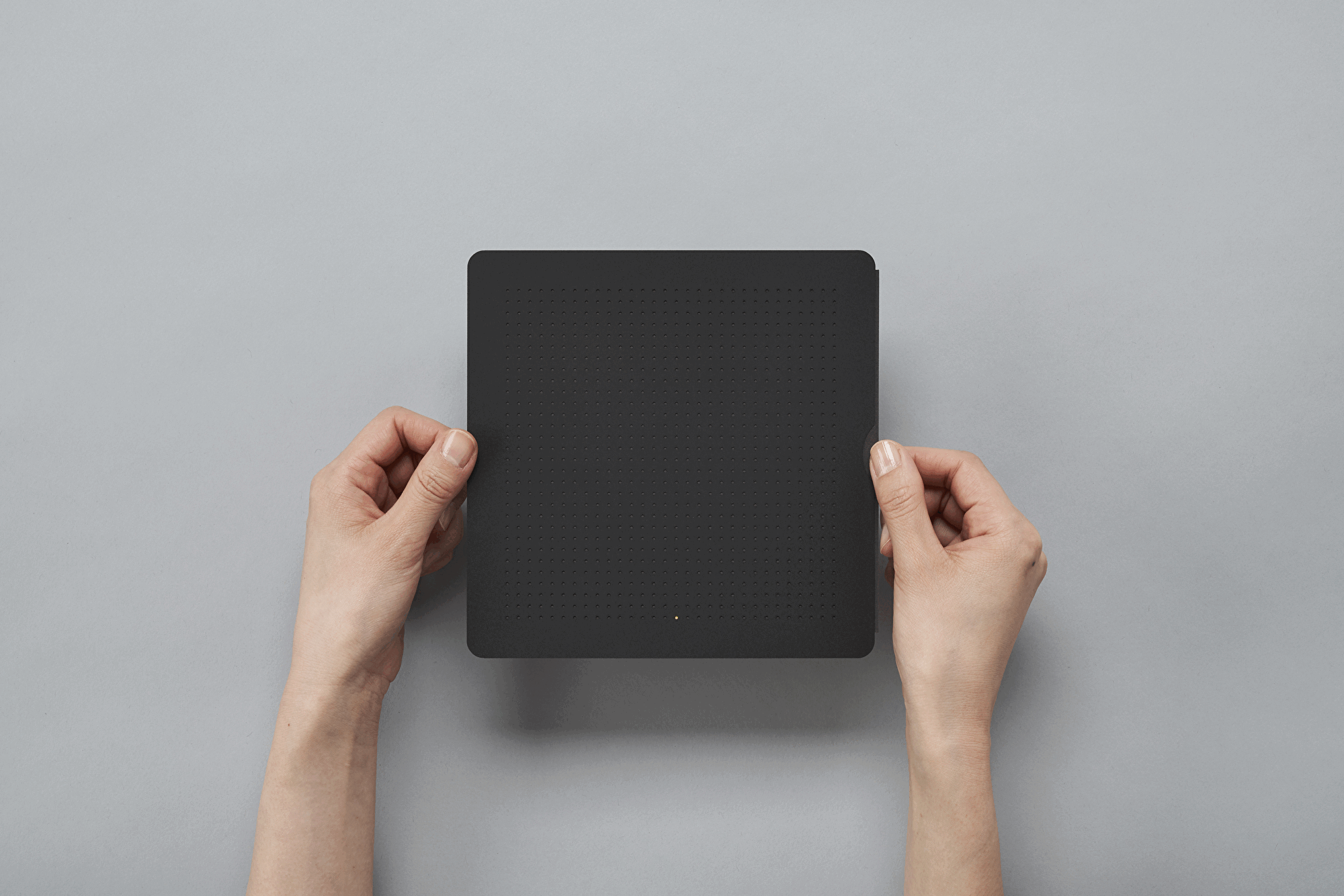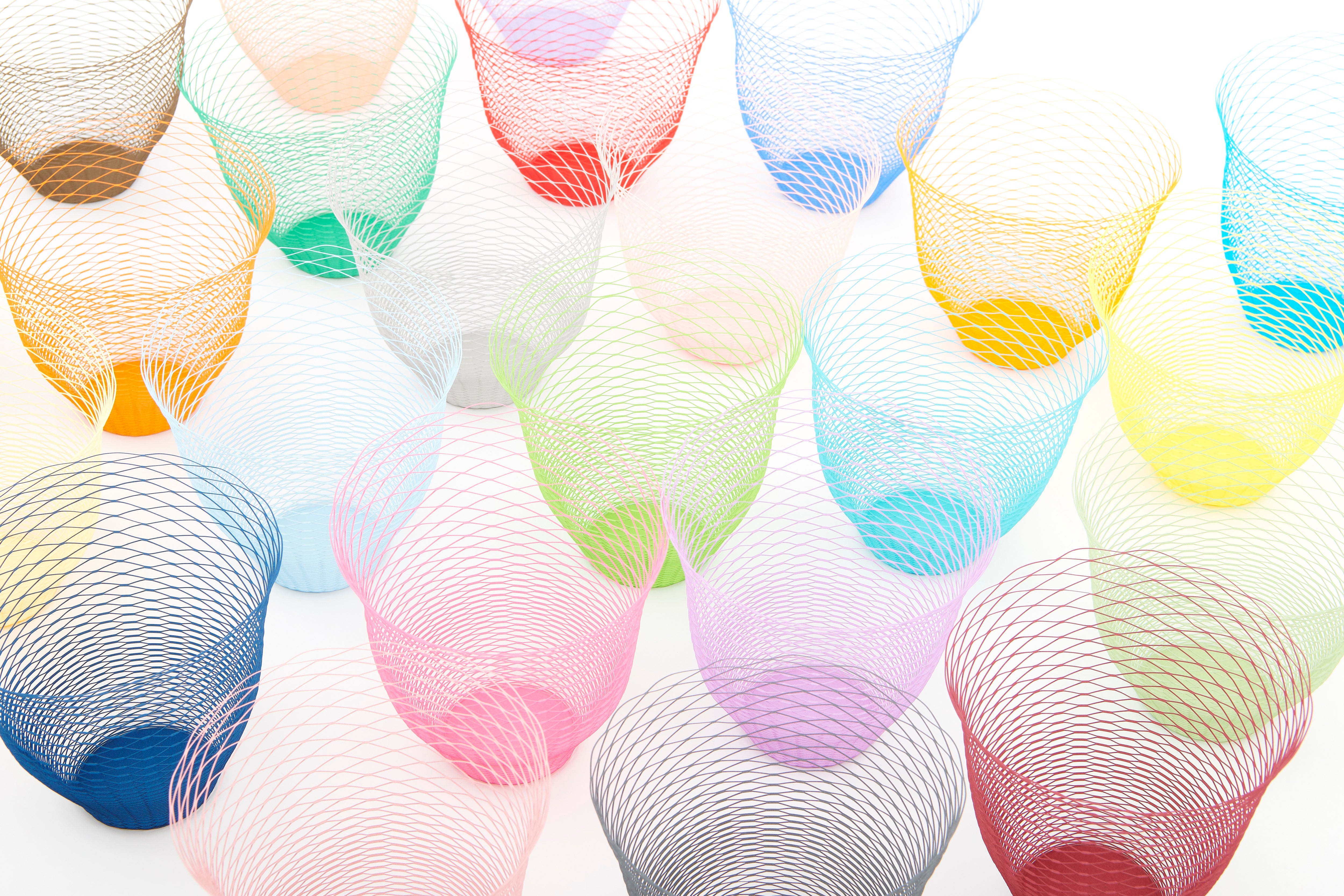
Recommended designs by HAYASHI Nobuyuki 1
"CRACKED PAPER" KODAMA Aya
When I was a child, I felt the excitement I felt when I saw paper crafts.My encounter with Fukunaga Shiko revived this feeling in me as an adult. When I go to a shop where the company's works (products) are lined up, I have seen them many times and know them well, but when I look at them one by one again and see them with my friends, I end up telling them, "Do you know?"
If half of the secret that creates this excitement is the company's craftsmanship that processes paper with high quality without compromise, then the other half is working with various interesting creators to bring out new possibilities for paper that have never existed before. I think it's the spirit of continuing to take on challenges.
This spirit of challenge is most strongly reflected in the group of works from "Shikoushiten".
It's hard to choose one because I like all of them, but when I want to convey the charm of Fukunaga Print to others, CRACKED PAPER developed with Ms. Aya Kodama will instantly convey it.
While many other works draw out the overlooked characteristics of paper and show new possibilities, CRACKED PAPER is the exact opposite, aiming for the least "paper-like" appearance. Most of the people I showed it to couldn't tell right away that it was paper.
I can't even imagine how much trial and error was repeated between Fukunaga Shiko's sophisticated processing technology and Mr. Kodama. If they had compromised even a little bit, I don't think it would have looked as good as it has. Fukunaga Print feels that by creating this most unpaper-like piece of art, he has been able to push the possibilities of paper even further.
That's why I was introduced to Fukunaga Print's favorite product, "first of all", which I can't just pick and choose.

Recommended designs by HAYASHI Nobuyuki 2
"DOT ANIMATION CARD" NAITO shigeki
When you pull out a card from an envelope with lots of holes, you'll see a firework animation. When the paper inside is turned upside down and reinserted, the characters "HAPPY BIRTHDAY TO YOU" appear in animation. Animation on paper, which is also different from flip book. It's so fun and exciting.
It looks like a dot picture, but it's a bit digital. It looks like the moving pictograms of an old mobile phone, but there is also a sense of warmth in moving them manually. I was shocked that such a simple structure could create so much excitement and excitement.
Due to the nature of my work, I am often considered a “digital person”. On birthdays and other occasions, I send this card that feels "digital" without writing the sender. In fact, behind that, I also have a wish that the other person will know that "digital is digital, but I am a digital person who knows the goodness of analog."
Later, I was surprised to learn that Shigeki Naito, who is currently an in-house designer, submitted this work to KAMI NO KOSAKUJO's paper card design competition and won.
I was once again impressed by Fukunaga Shiko's stance of not only collaborating with famous creators, but also holding competitions to pursue the fun of paper.
Occasionally, new works such as the National Art Center,Tokyo limited version are appearing, but I secretly hope that more such collaborations and limited new cards will appear in the future.

Recommended designs by HAYASHI Nobuyuki 3
"air vase" TORAFU ARCHITECTS Inc.
It's too standard, and other people will pick it up, so I thought I'd stop picking it up. However, when discussing Fukunaga Print's products, the "air vase" cannot be left out. I had seen many Fukunaga Print products, including TERADAMOKEI, before "air vase". However, it was the "air vase" that I was consciously facing for the first time as a product of the company.
2010, when the product was born, was the year the iPad was born, and he traveled around the country giving lectures at a pace of about once every three days, so he didn't have many opportunities to learn about the product. The following year, in 2011, I was surprised to learn that the "air vase" had just been bought when I participated in "air vase" workshop hosted by TORAFU ARCHITECTS Inc. , which had developed it. As the workshop progressed, I learned that if the front and back were different colors and patterns, it would show various expressions depending on how it was opened (stretched). I was impressed that such a simple structure could create something so expressive. You can stand it up like a basket, or you can wrap a wine bottle and tie it with a string to wrap it.
Since then, every time a new variation has appeared, I'm excited to see what it will look like when opened.
Another reason why I like "air vase" is that this product makes me proud of Japanese products. "air vase" has become one of my favorite museum shops and select shop staples even outside of Japan. Whether you go to MoMA in New York or to Rossana Orlandi, a very unique select shop in Milan, it has a special presence. this product tells me that it is not just traditional crafts, and encourages me.
PROFILE
HAYASHI Nobuyuki
Freelance journalist / Consultant
Exploring and disseminating values that should be preserved in the 22nd century in the fields of technology, design, and art. In 1990, he started working as a technology journalist. Interviewed many engineers and visionaries who built the personal computer industry, as well as founders/managers/engineers/designers of major IT companies such as Apple and Google. The forefront of the spread of the Internet and smartphones was also followed. Since around 2007, he has been giving lectures and participating in advisory boards at home appliance manufacturers, telecommunications companies, and IT ventures. Since around 2010, he has changed his mind that technology does not necessarily make people richer, and has devoted himself to enlightenment about design-oriented attitudes that create a better future. He is also a director of the Dyson Foundation, which promotes design engineering education, and a judge of the Good Design Award. From around 2015, when the footsteps of the AI era began to be heard, rather than the approach of design that seeks to solve problems, the approach of art that seeks problems and questions itself is more important, and he has focused on covering contemporary art. He has authored many books, including "Why Twitter and the iPhone succeeded" and "Jobs created everything without inventing anything". Outside director of Revolver, Inc. Honorary visiting professor at Kanazawa College of Art.
